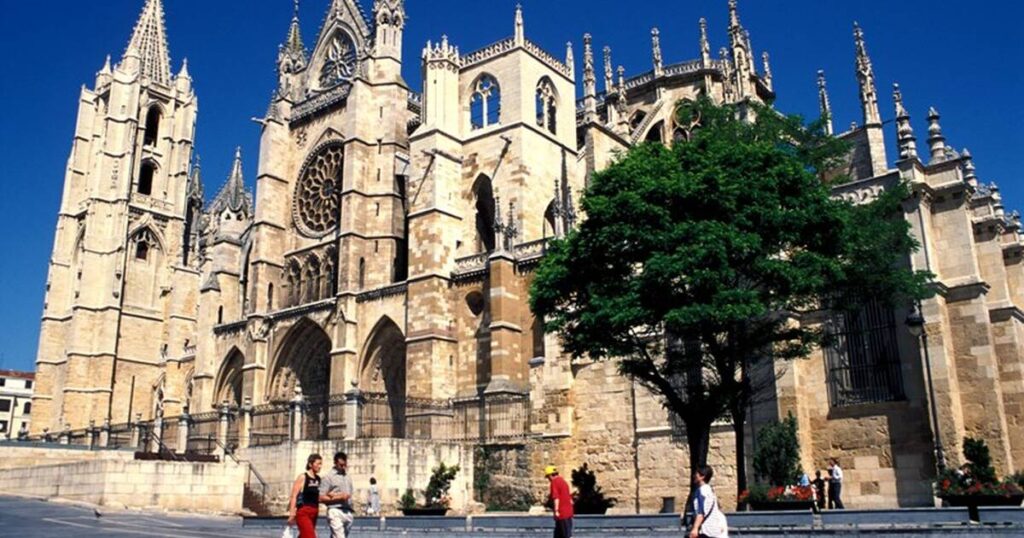Santiago de Compostela, Spain – Travel Tips
Category
Categories
Popular Articles

## Overview of the Destination: Santiago de Compostela
Santiago de Compostela, located in northern Spain, is renowned for one major thing – it’s the final destination of the legendary Camino de Santiago pilgrimage route. Travelers and pilgrims alike have been flocking to this city for centuries, lured by its stunning cathedral, charming old town, and rich spiritual heritage. This World Heritage city is full of intriguing history and undeniable charm that make it a remarkable destination worth visiting.
## Best Time to Visit: Santiago de Compostela
The peak season in Santiago de Compostela falls from July to September, when the weather is at its best. However, due to the influx of pilgrims, it can be quite crowded. The shoulder season, April to June and October to November, offer mild temperatures and fewer crowds, making it a great time to visit. St. James Day, a major festival celebrated on the 25th of July, is an experience of a lifetime marked by a grand fireworks display over the cathedral.
## Climate & What to Pack
Santiago’s climate is relatively mild throughout the year. Summertime experiences temperatures around 20-25°C, while the winter temperature hovers around 5-10°C. Rain is prevalent in Santiago, especially during the fall and spring, so never forget to pack an umbrella or rain jacket. Layers are the key, coupled with comfortable shoes for exploring the winding, cobblestone streets.
## Getting There
The nearest major airport to Santiago de Compostela is Lavacolla Airport, located about 13 km from the city. Buses and taxis are readily available to take you from the airport to your destination in the city. EU residents only require an ID card for entry, but non-EU residents should check visa requirements according to their nationality.
## Getting Around Locally
Santiago is a pedestrian-friendly city, and its charming Old Town is entirely walkable. However, buses and taxis are available if necessary. Although renting a car is an option, bear in mind that many areas in the city center are not accessible to private vehicles.
## Safety Tips
Santiago de Compostela is generally a safe city. However, be aware of pickpockets, especially in crowded areas or during major events. It’s best to keep your valuables secure at all times. Spanish is the primary language spoken here but English is also understood in most tourist areas.
## Top Things to Do & See
The Santiago Cathedral is the most substantial attraction, followed by other intriguing landmarks like the Monastery of San Martin Pinario and the City of Culture of Galicia. For nature lovers, Alameda park provides tranquil green spaces, whereas for foodies, Mercado de Abastos de Santiago is a must-visit.
## Where to Stay
For a luxurious stay, consider Parador de Santiago de Compostela, located right next to the cathedral. Mid-range options include Hotel Compostela and Hotel Pombal. Budget travelers might consider hostels like Blanco Albergue or Seminario Menor.
## Food & Local Cuisine
Indulge in delicious Galician cuisine with dishes like Pulpo a la Gallega (octopus with paprika), empanada Gallega (a type of pie), and Tarta de Santiago (almond cake). Pair your meal with Albariño, the region’s famous white wine. Restaurants like Casa Marcelo and O Curro da Parra offer fantastic local delicacies.
## Cultural & Practical Tips
The official currency is Euros (€) and Spanish is the spoken language. Tipping is not obligatory but appreciated for good service. Standard voltage is 230V and plug types are F and C. Most places offer free Wi-Fi access.
## Sustainable or Responsible Travel Tips
Respect the cultural and historical heritage of Santiago – avoid loud noises near holy sites, dispose of litter properly, and use water sparingly. Consider using walking or public transport, which have less impact on the environment than private car hires.
Lastly, Santiago is a place that stirs the soul; take the time to connect with its people, listen to their stories, and immerse yourself in the city’s spiritual energy. Enjoy the journey as much as the destination itself – this is the true spirit of Santiago de Compostela!










